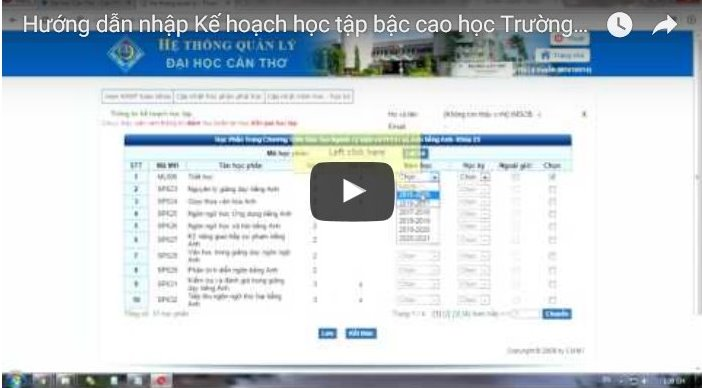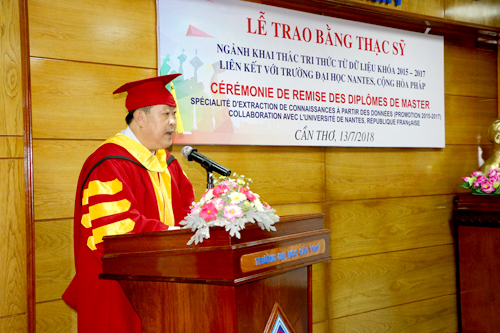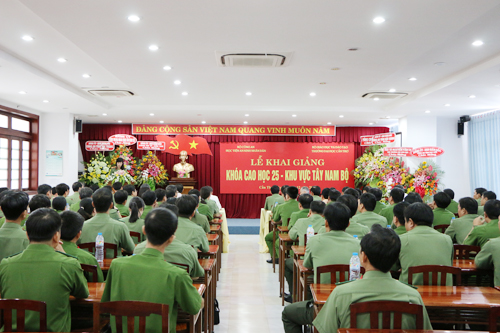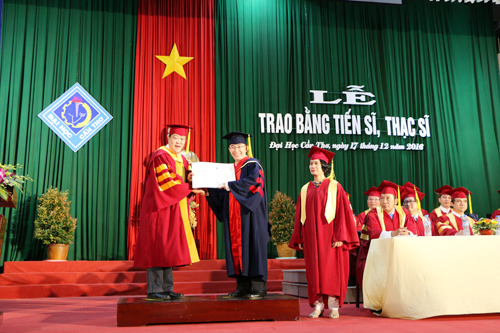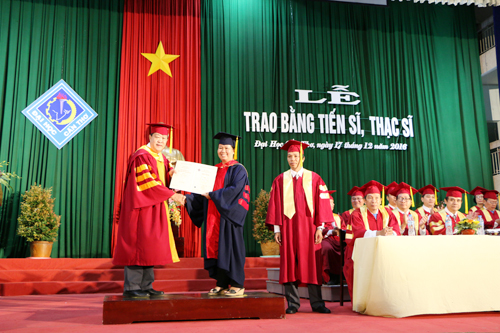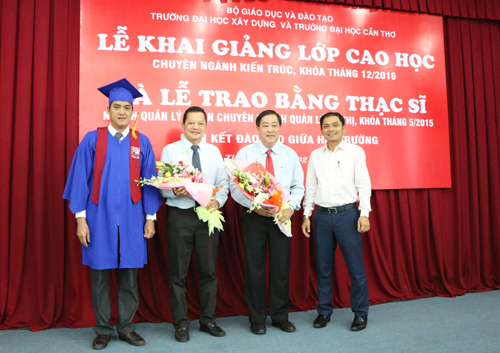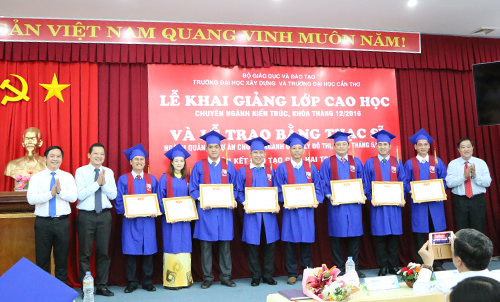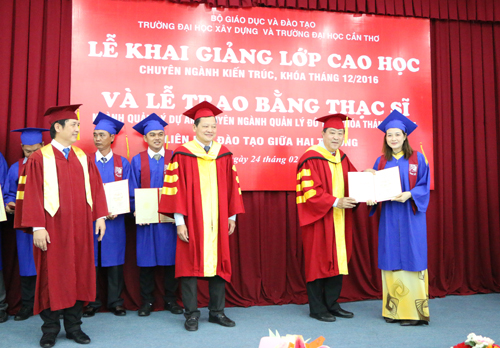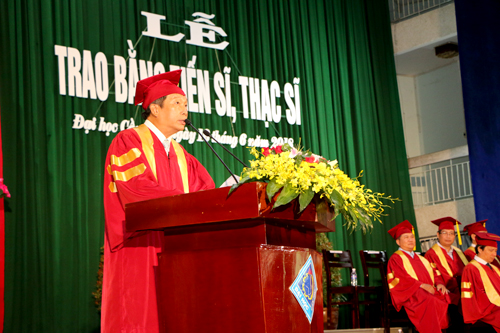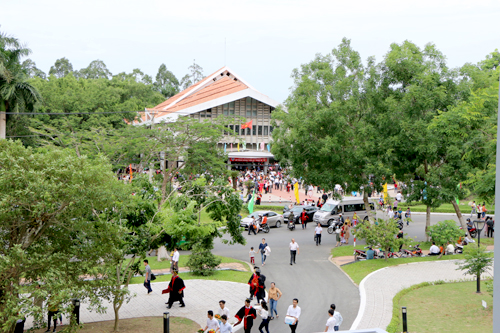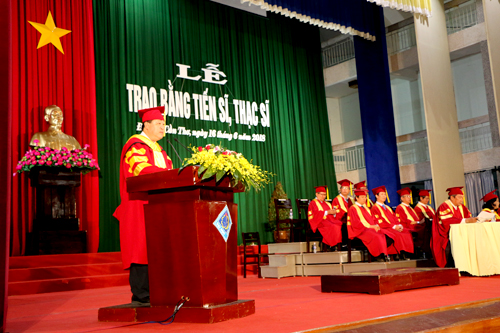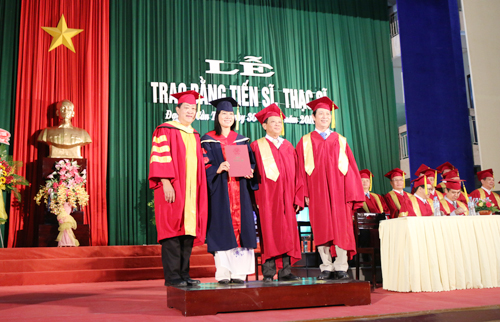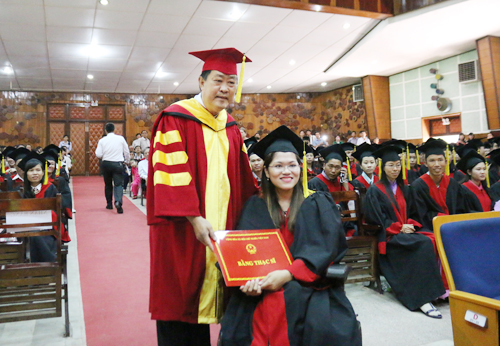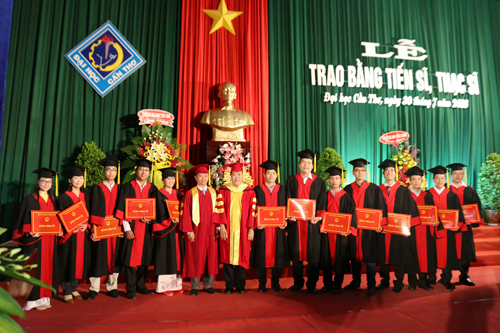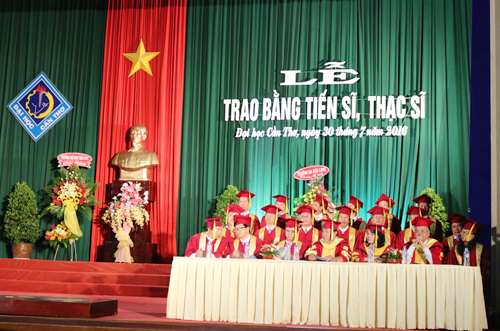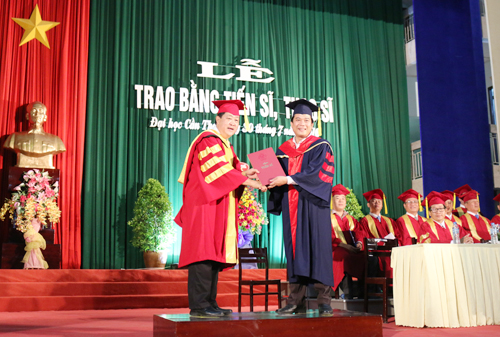
Tên đề tài: “Phân lập, tuyển chọn vi khuẩn Lactobacillus spp. và ứng dụng trong bảo quản chôm chôm sau thu hoạch”
Tác giả: Thạch Thị Ngọc Yến, Khóa: 2019
Chuyên ngành: Vi sinh vật học; Mã số: 9420107. Nhóm ngành: Khoa học sự sống
Người hướng dẫn chính: TS. Nguyễn Văn Phong - Viện Cây ăn quả miền Nam
Người hướng dẫn phụ: PGS.TS. Nguyễn Văn Thành - Trường Đại học Cần Thơ
1. Tóm tắt nội dung luận án
Luận án phân lập được 56 dòng vi khuẩn Lactobacillus spp. từ 5 mẫu trái cây và 7 mẫu sản phẩm lên men chua truyền thống tại Bến Tre và Tiền Giang. Phân lập và đinh danh được 7 dòng nấm gây thối trái chôm chôm sau thu hoạch. Kháo sát đã chon lọc được 3 dòng vi khuẩn có khả năng ức chế 7 dòng nấm bệnh trên trái chôm chôm. Nghiên cứu đã tạo được chế phẩm sinh học với nồng độ 108CFU/mL vi khuẩn kết hợp với từng loại chất bổ sung là 0,03% chitosan, 0,03% alginate và 0,5% CMC. Hiệu quả ứng dụng bảo quản sau thu hoạch trên chôm chôm với chế phẩm sinh học đạt kết quả cáo ở 4 nghiệm thức CC6-Chito, DC2-Chito, CC6-CMC và DC2–SA với thời gian bảo quản đến 15 ngày, tỉ lệ nấm bệnh thấp, hạn chế hóa nâu vỏ trái, độ sáng cao và duy trì chất lượng trái. Hai nghiệm thức DC2-Chito và CC6-CMC có hiệu quả cao trong xử lý cận thu hoạch trên chôm chôm, trái sáng, đẹp, không bị nấm bệnh về sau thu hoạch.
2. Những đóng góp mới của luận án
Nghiên cứu đã phân lập và tuyển chọn các chủng Lactobacillus spp. có đặc tính kháng nấm hiệu quả từ nguồn tự nhiên và thử nghiệm ứng dụng bảo quản chôm chôm trước và sau thu hoạch, mở ra một hướng đi mới trong việc sử dụng các lợi khuẩn để kéo dài thời gian bảo quản trái cây.
Việc ứng dụng Lactobacillus spp. để bảo quản chôm chôm là một cách tiếp cận sinh học, thân thiện với môi trường và có lợi cho sức khỏe người tiêu dùng, khác biệt so với các phương pháp truyền thống. Đây là một bước tiến mới trong lĩnh vực bảo quản nông sản sau thu hoạch bằng công nghệ sinh học.
3. Các ứng dụng/khả năng ứng dụng trong thực tiển, các vấn đề cần tiếp tục nghiên cứu
Đóng góp vào nghiên cứu vi sinh vật: Nghiên cứu này đã phân lập được 56 dòng vi khuẩn Lactobacillus spp. từ các sản phẩm lên men lactic và một số loại trái cây, cung cấp thông tin về các dòng vi khuẩn Lactobacillus spp. có khả năng kháng lại các tác nhân gây hư hỏng và kéo dài thời gian bảo quản trái cây. Nghiên cứu đã xác định 3 dòng vi khuẩn Lactobacillus spp. có khả năng ức chế nấm bệnh tốt nhất trên chôm chôm, đồng thời khẳng định hiệu quả của các dòng vi khuẩn này khi kết hợp với chất bổ sung nhằm duy trì chất lượng chôm chôm sau thu hoạch. Điều này không chỉ giúp giảm thiểu sử dụng hóa chất mà còn nâng cao giá trị nghiên cứu trong lĩnh vực vi sinh vật học ứng dụng.
Phát triển phương pháp bảo quản sinh học: Luận án đóng góp vào việc phát triển các phương pháp bảo quản sinh học, sử dụng các chủng vi khuẩn có lợi để duy trì chất lượng và kéo dài thời gian bảo quản chôm chôm. Đây là một hướng đi tiên tiến và có tiềm năng áp dụng rộng rãi, giúp bảo vệ sức khỏe người tiêu dùng và bảo vệ môi trường.
Giảm thiểu tổn thất sau thu hoạch: Bằng cách sử dụng các chủng vi khuẩn Lactobacillus spp. có thể kéo dài thời gian bảo quản của chôm chôm sau thu hoạch, giảm thiểu hao hụt và hư hỏng trong quá trình vận chuyển và bảo quản. Điều này mang lại lợi ích kinh tế đáng kể cho người nông dân và doanh nghiệp trong chuỗi cung ứng.
Tăng cường tính an toàn và tự nhiên của sản phẩm: Phương pháp bảo quản bằng vi khuẩn Lactobacillus spp. là một giải pháp tự nhiên, không sử dụng hóa chất tổng hợp, giúp nâng cao chất lượng an toàn thực phẩm, phù hợp với xu hướng tiêu dùng hiện đại và tăng cường khả năng cạnh tranh của nông sản Việt Nam trên thị trường quốc tế.
Góp phần phát triển nền nông nghiệp bền vững: Việc ứng dụng vi khuẩn có lợi trong bảo quản không chỉ giúp cải thiện chất lượng sản phẩm mà còn giúp giảm thiểu tác động xấu đến môi trường, phù hợp với xu hướng phát triển nông nghiệp bền vững và thân thiện với môi trường.
Thesis title: ISOLATION AND SELECTION OF LACTOBACILLUS SPP. BACTERIA AND THEIR APPLICATION IN POSTHARVEST PRESERVATION OF RAMBUTAN
Major: Microbiology Code: 9420107
Full name of PhD student: Thach Thi Ngoc Yen Study period: 2019 -2022 Supervisor: Dr. Nguyen Van Phong and Assoc. Prof. Dr. Nguyen Van Thanh
Academic institution: Can Tho University
1. Summary of the objectives of the thesis:
The thesis isolated 56 strains of Lactobacillus spp. bacteria from 5 fruit samples and 7 samples of traditional fermented products in Ben Tre and Tien Giang. Isolated and identified 7 strains of fungi causing postharvest rot of rambutan fruit. The survey selected 3 strains of bacteria capable of inhibiting 7 strains of pathogenic fungi on rambutan fruit. The study created a biological product with a concentration of 108 CFU/mL of bacteria combined with each type of supplement: 0.03% chitosan, 0.03% alginate and 0.5% CMC. The effectiveness of postharvest preservation application on rambutan with biological products achieved high results in 4 treatments: CC6-Chito, DC2-Chito, CC6-CMC and DC2-SA with a storage time of up to 15 days, low fungal disease rate, limited browning of fruit peel, high brightness and maintaining fruit quality. The two treatments DC2-Chito and CC6-CMC were highly effective in pre-harvest treatment of rambutan, with bright, beautiful fruit and no fungal diseases after harvest.
2. New contributions of the thesis
The study has isolated and selected strains of Lactobacillus spp. has effective antifungal properties from natural sources and tested the application of pre- and post-harvest preservation of rambutan, opening a new direction in the use of probiotics to extend the shelf life of fruits.
The application of Lactobacillus spp. to preserve rambutan is a biological approach, environmentally friendly and beneficial to consumers' health, different from traditional methods. This is a new step forward in the field of post-harvest preservation of agricultural products using biotechnology.
- Practical applicability / further research directions, if any:
Contribution to microbiological research: This study isolated 56 strains of Lactobacillus spp. from lactic fermentation products and some fruits, providing information on strains of Lactobacillus spp. that are resistant to spoilage agents and extend the shelf life of fruits. The study identified three strains of Lactobacillus spp. that were most effective in inhibiting fungal diseases on rambutan, and confirmed the effectiveness of these strains when combined with supplements to maintain the quality of rambutan after harvest. This not only helps to reduce the use of chemicals but also enhances the research value in the field of applied microbiology.
Developing biological preservation methods: The thesis contributes to the development of biological preservation methods, using beneficial bacterial strains to maintain the quality and prolong the shelf life of rambutan. This is an advanced direction with the potential for widespread application, helping to protect consumer health and the environment.
Minimizing post-harvest losses: By using strains of Lactobacillus spp., it is possible to prolong the shelf life of rambutan after harvest, minimizing loss and damage during transportation and storage. This brings significant economic benefits to farmers and businesses in the supply chain.
Enhance the safety and naturalness of products: The method of preserving with Lactobacillus spp. bacteria is a natural solution, without using synthetic chemicals, helping to improve food safety quality, in line with modern consumption trends and enhancing the competitiveness of Vietnamese agricultural products in the international market.
Contribute to the development of sustainable agriculture: The application of beneficial bacteria in preservation not only helps improve product quality but also helps to minimize negative impacts on the environment, in line with the trend of developing sustainable and environmentally friendly agriculture.
- Xem chi tiết nội dung luận án
- Xem thông tin đăng tải tại Website Bộ giáo dục và Đào tạo. (Nhập tên NCS vào ô tìm kiếm)

